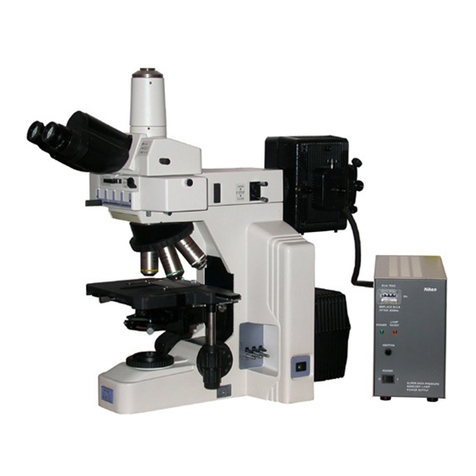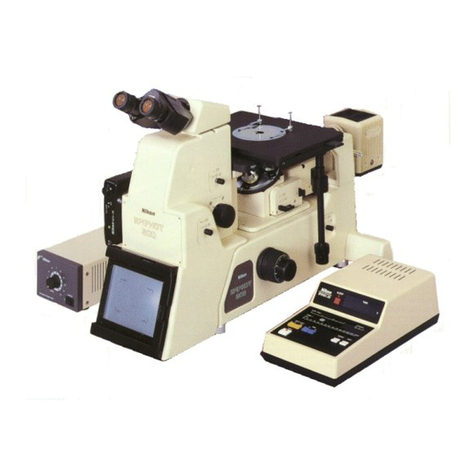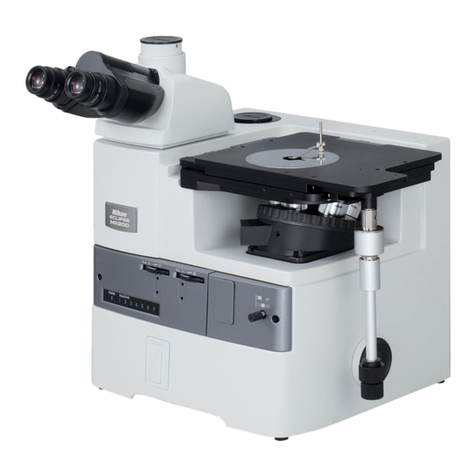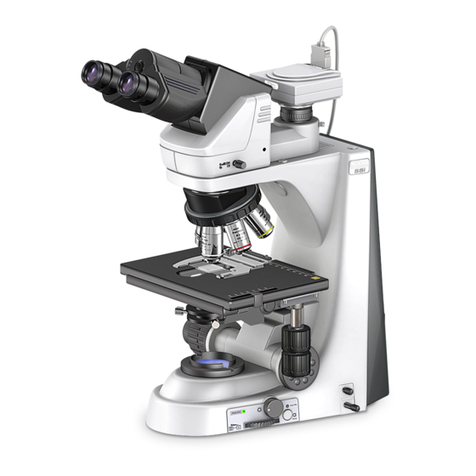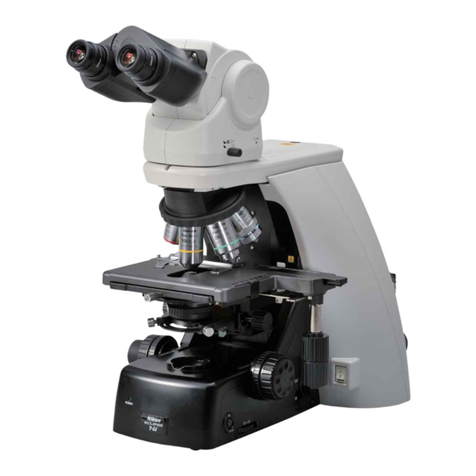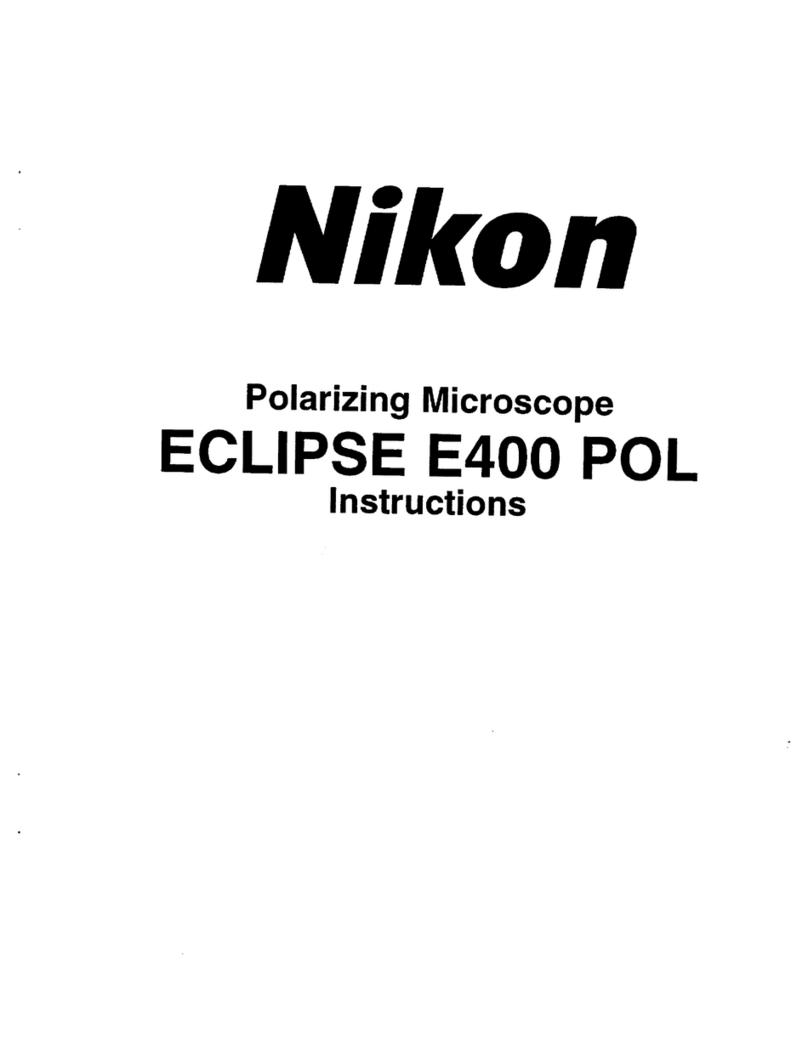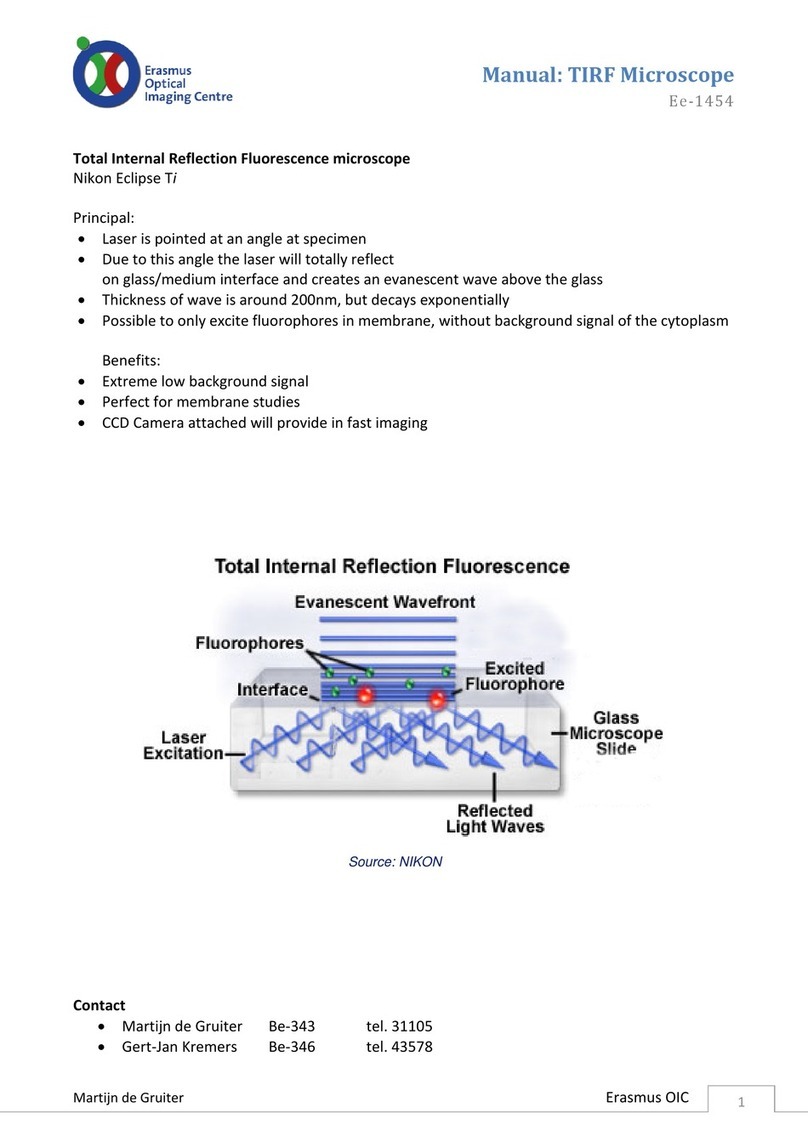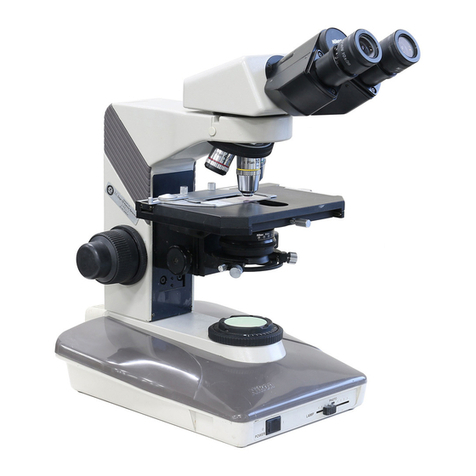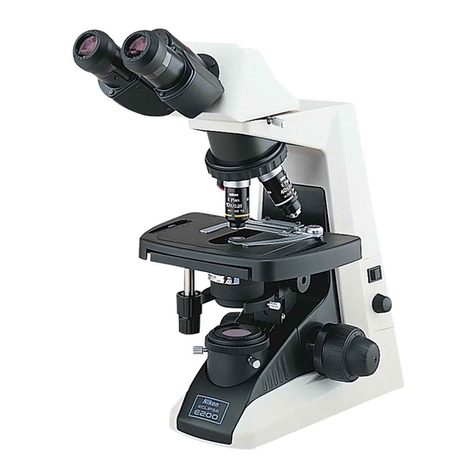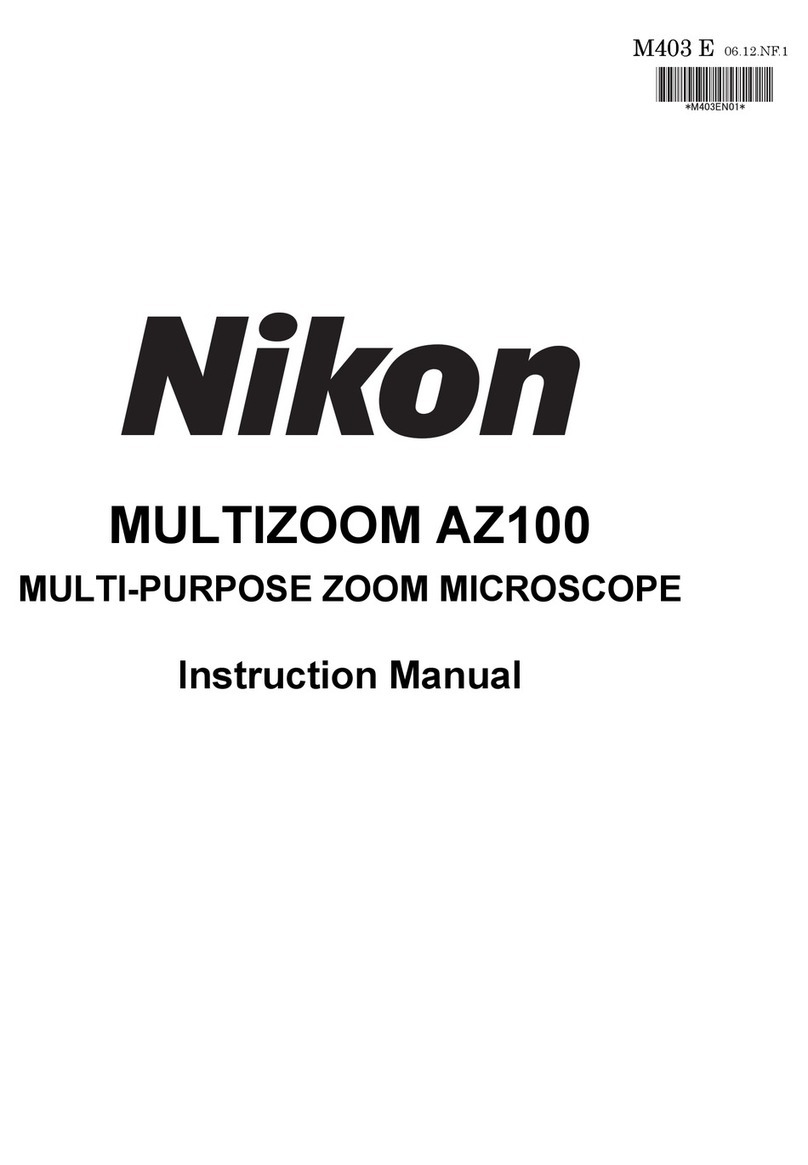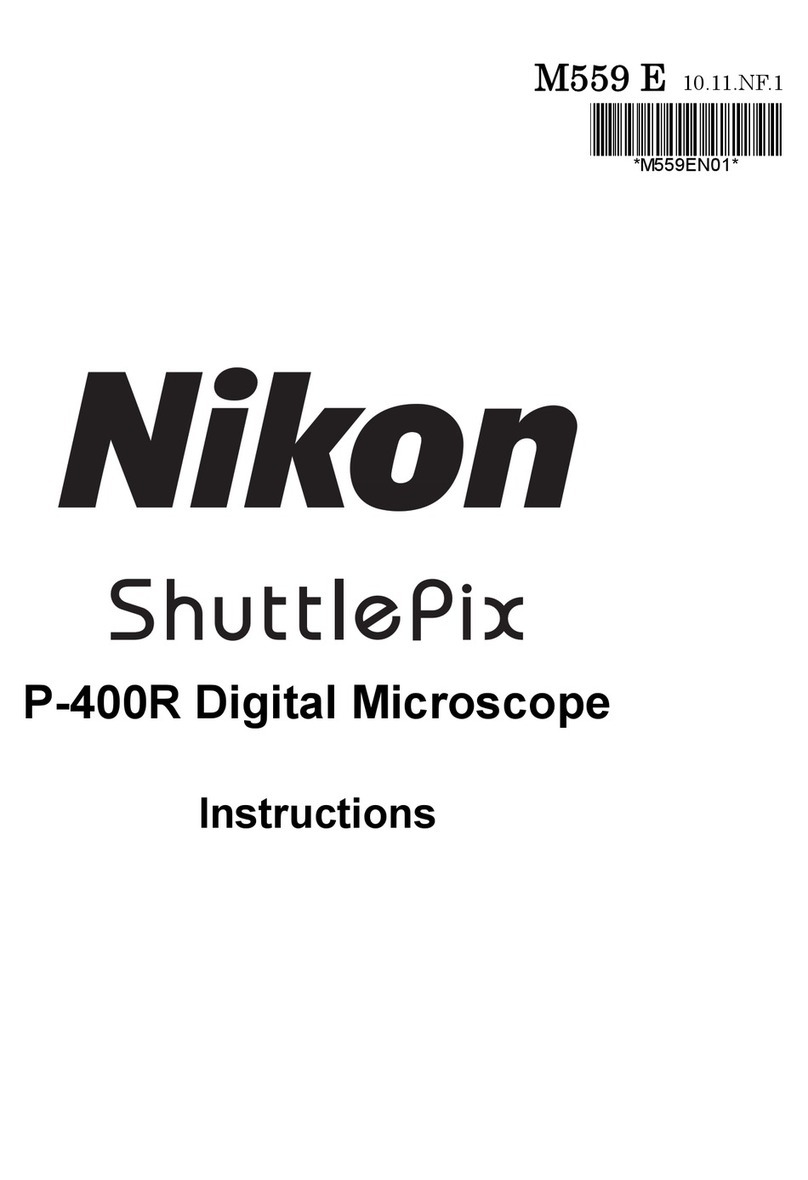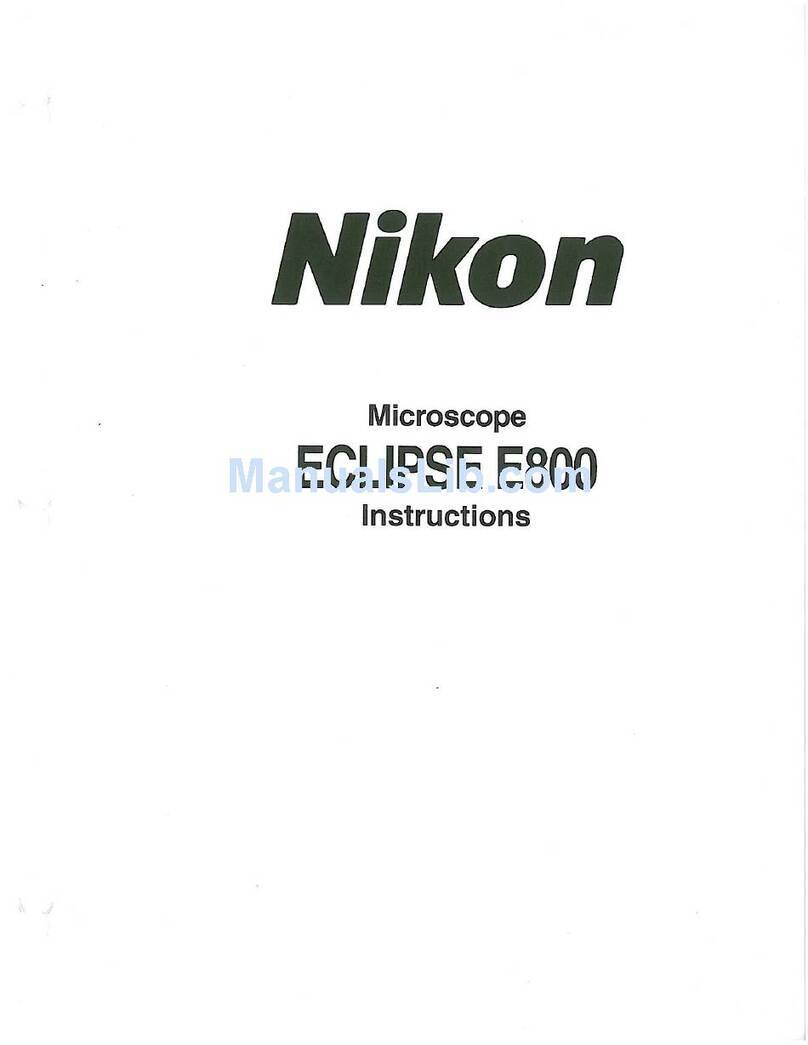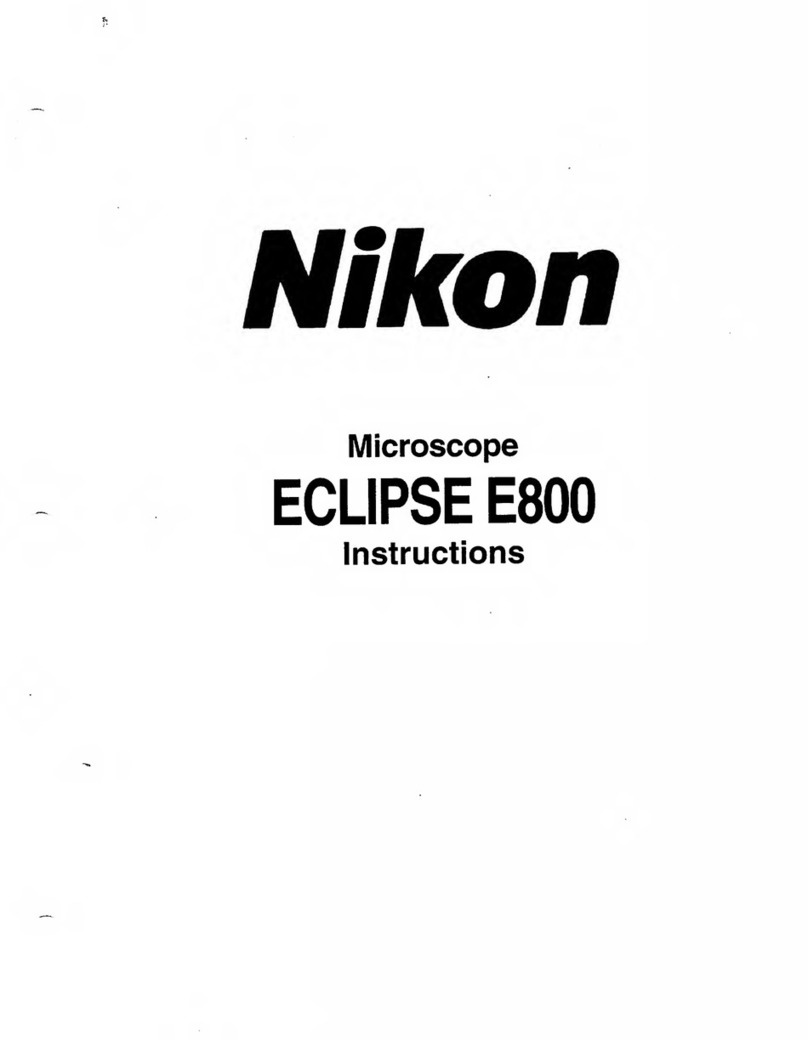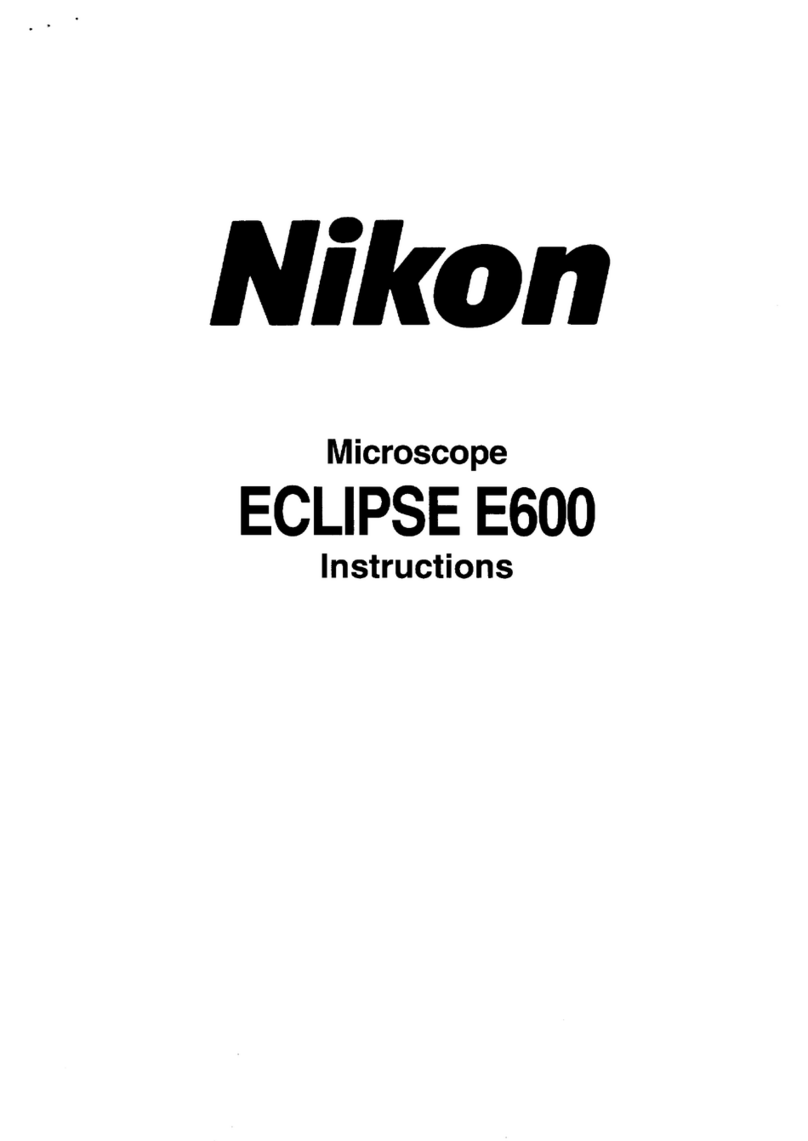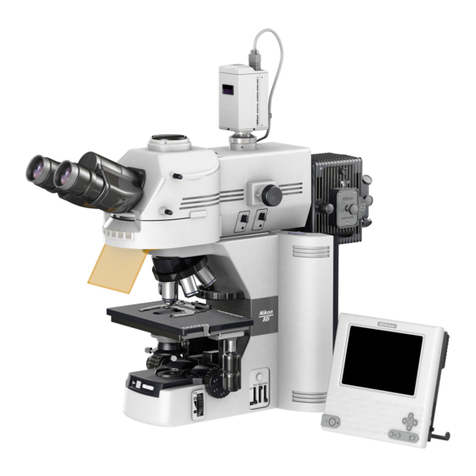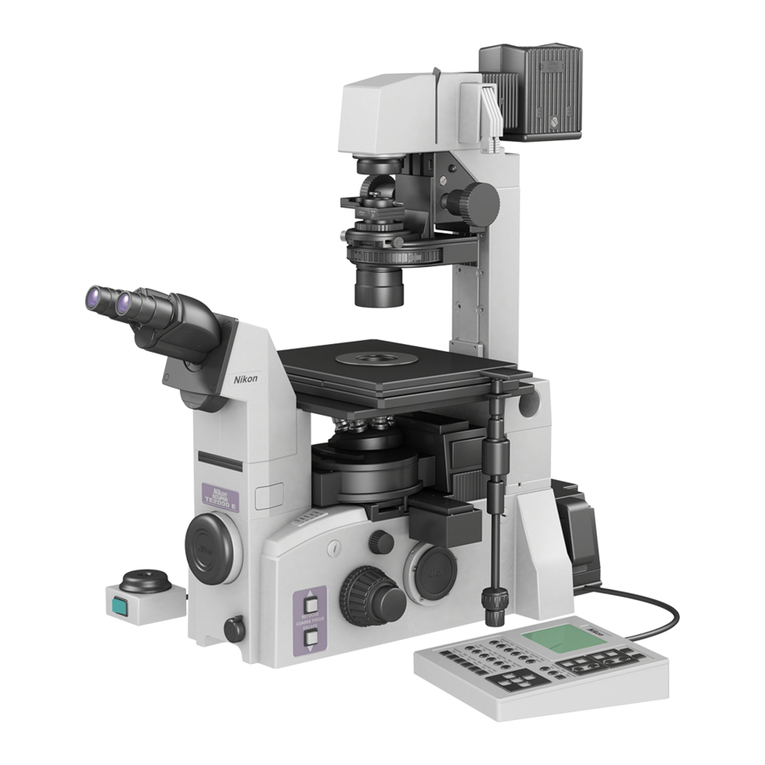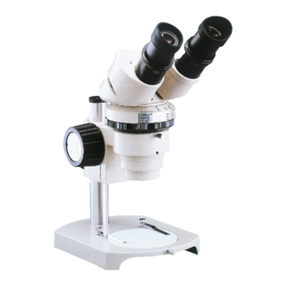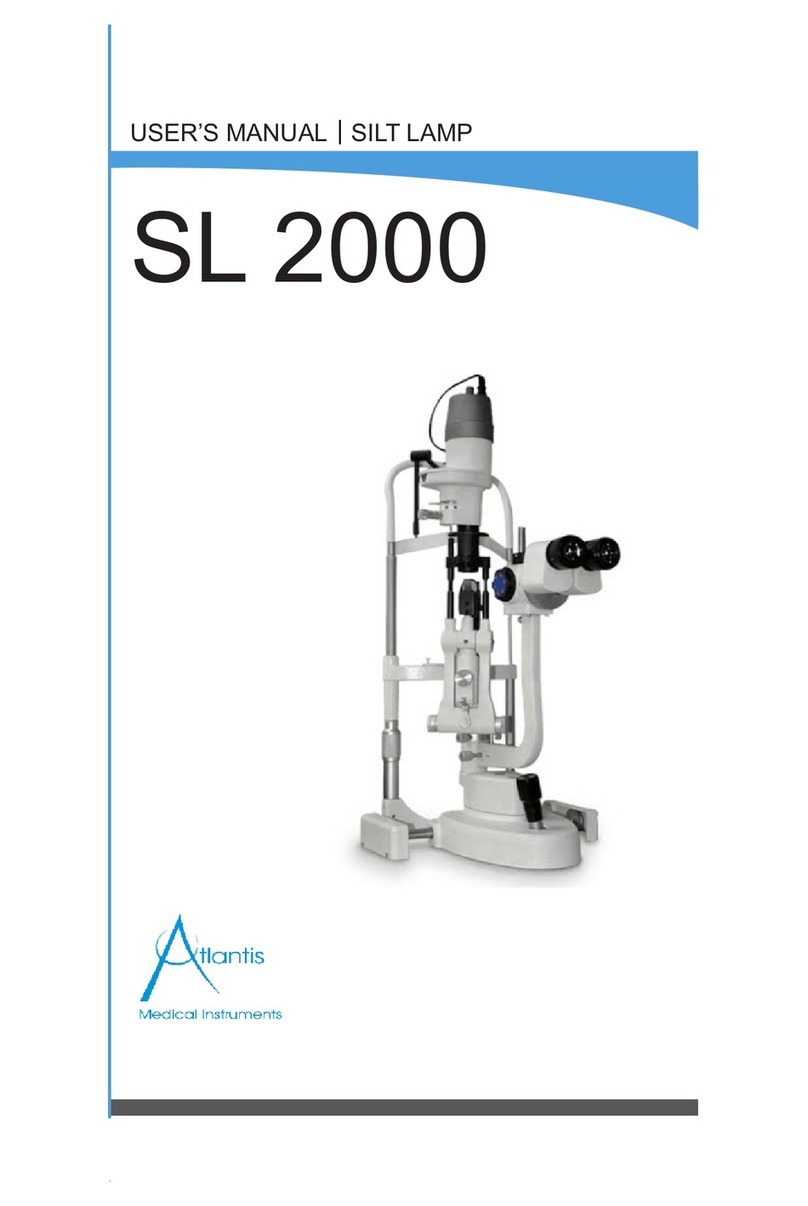
3
WARNING
7. To use an external light source
To perform an epi-fl microscopy with the LV-UEPI2A epi illuminator, the brightness of the
specified light source may be less than the desired brightness. In this case, the light source
described below can be used for the LV-UEPI2A epi illuminator.
•Light source
Nikon Inensilight C-HGFIE HG Precentered Illuminator (model name: C-HGFIE, electric operation
type) or X-Cite 120 PC (electric operation type) made by EXFO Electro Optical Engineering Inc.
If a manual operation type light source is attached, you cannot control the shutter and the
brightness on the microscope. Make sure to use the light source specified above.
Note that if the light source described above is used with the product, the product is not
approved as a UL listed product.
8. Heat from the light source
The lamp and the lamp house become extremely hot. To avoid burns, do not touch the lamp
house while the lamp is lit or for thirty minutes after it is turned off. Furthermore, to avoid
the risk of fire, do not place fabric, paper, or highly flammable volatile materials (such as
gasoline, petroleum benzine, paint thinner, or alcohol) near the lamp house while the lamp is
lit or for about thirty minutes after it is turned off.
9. Air vents
Do not block the air vents on the microscope and the lamp house. If the air vents are
blocked, the temperature of the microscope will rise. And it results in damage or fire.
10. Ultraviolet light from an external light source
If you use an external light source other than the specified ones and that has a mercury lamp, a
xenon lamp, or so on, the light source radiates ultraviolet light, which is harmful to the eyes and
skin, from the emission port. Direct viewing of light from these lamps may result in snow blindness
at a light case or blindness at the worst case. To prevent injury, follow the guidelines below:
1) Place a UVC collector lens into the optical path of the microscope unless the
UV excitation light is necessary.
On the LV-UEPI2A epi illuminator, an UV filter automatically enters the optical path when
the microscopy method is turned to the bright-field microscopy or the dark-field
microscopy. The UV filter is removed from the optical path when the microscopy method
is turned to the epi-fl microscopy 1 method (FL1) or the epi-fl microscopy 2 method (FL2).
2) When performing the epi-fl microscopy by using the UV excitation light, attach
the filter cube dedicated to the UV excitation light. If you must see the objective
or its surroundings, be sure to see through the ultraviolet light shield.
3) Use the light source with the microscope.
The light source device is required to be connected to the microscope whenever the light source
device is energized. Do not turn on the light source if it is not connected to the microscope, and
do not disconnect the light source from the microscope while the light source is lit.
When disconnecting the light source from the microscope, turn off the power to the light
source, and then unplug the power cord from the wall outlet.
11. Reflection
Lustrous specimens reflect the illumination. Do not observe the illuminated surface of a
specimen for a long time because the strong reflection may hurt your eyes. Make sure to see
the specimen through the ultraviolet light shield.
12. Cautions on operating the motorized units
The product can be controlled on a PC with “NIS-Elements,” the software for digital
cameras, when a digital camera is used with the product. To avoid unexpected injuries, note
the following when operating this product with a PC.
Before operating the product, check all moving parts for your safety.
•If you touch the nosepiece, objectives, or parts on the stage during operation, it may cause
injury to hands or fingers. Do not touch these devices or parts when operating.
